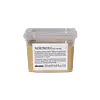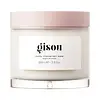What's inside
What's inside
 Key Ingredients
Key Ingredients

 Benefits
Benefits

 Concerns
Concerns

 Ingredients Side-by-side
Ingredients Side-by-side

Water
Skin ConditioningGlycerin
HumectantCetearyl Alcohol
EmollientPropanediol
SolventBehentrimonium Chloride
PreservativeCetrimonium Chloride
AntimicrobialCetyl Alcohol
EmollientDimethicone
EmollientGlyceryl Stearate
EmollientBehenyl Alcohol
EmollientBenzotriazolyl Dodecyl P-Cresol
UV AbsorberBeheneth-25
CleansingParfum
MaskingBenzyl Alcohol
PerfumingSimmondsia Chinensis Seed Oil
EmollientOlea Europaea Fruit Oil
MaskingAmodimethicone
Dicaprylyl Ether
EmollientLauryl Alcohol
EmollientOctadecyl Di-T-Butyl-4-Hydroxyhydrocinnamate
AntioxidantHydroxyethylcellulose
Emulsion StabilisingDisodium EDTA
Sodium Benzoate
MaskingCitric Acid
BufferingHydrogenated Olive Oil
Skin ConditioningTocopherol
AntioxidantSolanum Lycopersicum Fruit Extract
AntioxidantSclerotium Gum
Emulsion StabilisingDisiloxane
Skin ConditioningLinalool
PerfumingGeraniol
PerfumingLimonene
PerfumingCI 19140
Cosmetic ColorantCI 14700
Cosmetic ColorantCI 61570
Cosmetic ColorantWater, Glycerin, Cetearyl Alcohol, Propanediol, Behentrimonium Chloride, Cetrimonium Chloride, Cetyl Alcohol, Dimethicone, Glyceryl Stearate, Behenyl Alcohol, Benzotriazolyl Dodecyl P-Cresol, Beheneth-25, Parfum, Benzyl Alcohol, Simmondsia Chinensis Seed Oil, Olea Europaea Fruit Oil, Amodimethicone, Dicaprylyl Ether, Lauryl Alcohol, Octadecyl Di-T-Butyl-4-Hydroxyhydrocinnamate, Hydroxyethylcellulose, Disodium EDTA, Sodium Benzoate, Citric Acid, Hydrogenated Olive Oil, Tocopherol, Solanum Lycopersicum Fruit Extract, Sclerotium Gum, Disiloxane, Linalool, Geraniol, Limonene, CI 19140, CI 14700, CI 61570
Water
Skin ConditioningCetearyl Alcohol
EmollientBehentrimonium Chloride
PreservativeStearamidopropyl Dimethylamine
EmulsifyingCetyl Esters
EmollientGlycerin
HumectantHelianthus Annuus Hybrid Oil
EmollientHydrogenated Castor Oil/Sebacic Acid Copolymer
EmollientHoney
HumectantQuaternium-87
CleansingIsopropyl Alcohol
SolventCitric Acid
BufferingEuphorbia Cerifera Wax
Caprylyl Glycol
EmollientPanthenol
Skin ConditioningParfum
MaskingSodium Benzoate
MaskingPropylene Glycol
HumectantCocos Nucifera Oil
MaskingPassiflora Incarnata Seed Oil
Skin ProtectingHydrolyzed Wheat Protein
Skin ConditioningGardenia Taitensis Flower Extract
Skin ConditioningAdansonia Digitata Seed Oil
EmollientTocopherol
AntioxidantCI 19140
Cosmetic ColorantCI 14700
Cosmetic ColorantHexyl Cinnamal
PerfumingLimonene
PerfumingLinalool
PerfumingWater, Cetearyl Alcohol, Behentrimonium Chloride, Stearamidopropyl Dimethylamine, Cetyl Esters, Glycerin, Helianthus Annuus Hybrid Oil, Hydrogenated Castor Oil/Sebacic Acid Copolymer, Honey, Quaternium-87, Isopropyl Alcohol, Citric Acid, Euphorbia Cerifera Wax, Caprylyl Glycol, Panthenol, Parfum, Sodium Benzoate, Propylene Glycol, Cocos Nucifera Oil, Passiflora Incarnata Seed Oil, Hydrolyzed Wheat Protein, Gardenia Taitensis Flower Extract, Adansonia Digitata Seed Oil, Tocopherol, CI 19140, CI 14700, Hexyl Cinnamal, Limonene, Linalool
 Reviews
Reviews

Ingredients Explained
These ingredients are found in both products.
Ingredients higher up in an ingredient list are typically present in a larger amount.
This ingredient is a preservative and often used for it's anti-static properties. You'll most likely see this ingredient in hair conditioners.
It does not cause irritation or sensitization in leave-on products at 1-5%.
Cetearyl alcohol is a mixture of two fatty alcohols: cetyl alcohol and stearyl alcohol. It is mainly used as an emulsifier. Emulsifiers help prevent the separation of oils and products. Due to its composition, it can also be used to thicken a product or help create foam.
Cetearyl alcohol is an emollient. Emollients help soothe and hydrate the skin by trapping moisture.
Studies show Cetearyl alcohol is non-toxic and non-irritating. The FDA allows products labeled "alcohol-free" to have fatty alcohols.
This ingredient is usually derived from plant oils such as palm, vegetable, or coconut oils. There is debate on whether this ingredient will cause acne.
Due to the fatty acid base, this ingredient may not be Malassezia folliculitis safe.
Learn more about Cetearyl AlcoholCi 14700, also known as Red No. 4, is a synthetic red dye derived from petroleum. It is water soluble.
CI 19140 is also known as Tartrazine. Tartrazine is a synthetic dye used in cosmetics, foods, and medicine to add a yellow color.
Tartrazine is created from petroleum and is water-soluble.
Some people may experience allergies from this dye, especially asthmatics and those with an aspirin intolerance.
Learn more about CI 19140Citric Acid is an alpha hydroxy acid (AHA) naturally found in citrus fruits like oranges, lemons, and limes.
Like other AHAs, citric acid can exfoliate skin by breaking down the bonds that hold dead skin cells together. This helps reveal smoother and brighter skin underneath.
However, this exfoliating effect only happens at high concentrations (20%) which can be hard to find in cosmetic products.
Due to this, citric acid is usually included in small amounts as a pH adjuster. This helps keep products slightly more acidic and compatible with skin's natural pH.
In skincare formulas, citric acid can:
While it can provide some skin benefits, research shows lactic acid and glycolic acid are generally more effective and less irritating exfoliants.
Most citric acid used in skincare today is made by fermenting sugars (usually from molasses). This synthetic version is identical to the natural citrus form but easier to stabilize and use in formulations.
Read more about some other popular AHA's here:
Learn more about Citric AcidGlycerin is already naturally found in your skin. It helps moisturize and protect your skin.
A study from 2016 found glycerin to be more effective as a humectant than AHAs and hyaluronic acid.
As a humectant, it helps the skin stay hydrated by pulling moisture to your skin. The low molecular weight of glycerin allows it to pull moisture into the deeper layers of your skin.
Hydrated skin improves your skin barrier; Your skin barrier helps protect against irritants and bacteria.
Glycerin has also been found to have antimicrobial and antiviral properties. Due to these properties, glycerin is often used in wound and burn treatments.
In cosmetics, glycerin is usually derived from plants such as soybean or palm. However, it can also be sourced from animals, such as tallow or animal fat.
This ingredient is organic, colorless, odorless, and non-toxic.
Glycerin is the name for this ingredient in American English. British English uses Glycerol/Glycerine.
Learn more about GlycerinLimonene is a fragrance that adds scent and taste to a formulation.
It's found in the peel oil of citrus fruits and other plants such as lavender and eucalyptus. The scent of limonene is generally described as "sweet citrus".
Limonene acts as an antioxidant, meaning it helps neutralize free radicals.
When exposed to air, oxidized limonene may sensitize the skin. Because of this, limonene is often avoided by people with sensitive skin.
The term 'fragrance' is not regulated in many countries. In many cases, it is up to the brand to define this term. For instance, many brands choose to label themselves as "fragrance-free" because they are not using synthetic fragrances. However, their products may still contain ingredients such as essential oils that are considered a fragrance.
Learn more about LimoneneLinalool is a fragrance and helps add scent to products. It's derived from common plants such as cinnamon, mint, citrus, and lavender.
Like Limonene, this ingredient oxidizes when exposed to air. Oxidized linalool can cause allergies and skin sensitivity.
This ingredient has a scent that is floral, spicy tropical, and citrus-like.
Learn more about LinaloolParfum is a catch-all term for an ingredient or more that is used to give a scent to products.
Also called "fragrance", this ingredient can be a blend of hundreds of chemicals or plant oils. This means every product with "fragrance" or "parfum" in the ingredients list is a different mixture.
For instance, Habanolide is a proprietary trade name for a specific aroma chemical. When used as a fragrance ingredient in cosmetics, most aroma chemicals fall under the broad labeling category of “FRAGRANCE” or “PARFUM” according to EU and US regulations.
The term 'parfum' or 'fragrance' is not regulated in many countries. In many cases, it is up to the brand to define this term.
For instance, many brands choose to label themselves as "fragrance-free" because they are not using synthetic fragrances. However, their products may still contain ingredients such as essential oils that are considered a fragrance by INCI standards.
One example is Calendula flower extract. Calendula is an essential oil that still imparts a scent or 'fragrance'.
Depending on the blend, the ingredients in the mixture can cause allergies and sensitivities on the skin. Some ingredients that are known EU allergens include linalool and citronellol.
Parfum can also be used to mask or cover an unpleasant scent.
The bottom line is: not all fragrances/parfum/ingredients are created equally. If you are worried about fragrances, we recommend taking a closer look at an ingredient. And of course, we always recommend speaking with a professional.
Learn more about ParfumSodium Benzoate is a preservative. It's used in both cosmetic and food products to inhibit the growth of mold and bacteria. It is typically produced synthetically.
Both the US FDA and EU Health Committee have approved the use of sodium benzoate. In the US, levels of 0.1% (of the total product) are allowed.
Sodium benzoate works as a preservative by inhibiting the growth of bacteria inside of cells. It prevents the cell from fermenting a type of sugar using an enzyme called phosphofructokinase.
It is the salt of benzoic acid. Foods containing sodium benzoate include soda, salad dressings, condiments, fruit juices, wines, and snack foods.
Studies for using ascorbic acid and sodium benzoate in cosmetics are lacking, especially in skincare routines with multiple steps.
We always recommend speaking with a professional, such as a dermatologist, if you have any concerns.
Learn more about Sodium BenzoateTocopherol (also known as Vitamin E) is a common antioxidant used to help protect the skin from free-radicals and strengthen the skin barrier. It's also fat soluble - this means our skin is great at absorbing it.
Vitamin E also helps keep your natural skin lipids healthy. Your lipid skin barrier naturally consists of lipids, ceramides, and fatty acids. Vitamin E offers extra protection for your skin’s lipid barrier, keeping your skin healthy and nourished.
Another benefit is a bit of UV protection. Vitamin E helps reduce the damage caused by UVB rays. (It should not replace your sunscreen). Combining it with Vitamin C can decrease sunburned cells and hyperpigmentation after UV exposure.
You might have noticed Vitamin E + C often paired together. This is because it is great at stabilizing Vitamin C. Using the two together helps increase the effectiveness of both ingredients.
There are often claims that Vitamin E can reduce/prevent scarring, but these claims haven't been confirmed by scientific research.
Learn more about TocopherolWater. It's the most common cosmetic ingredient of all. You'll usually see it at the top of ingredient lists, meaning that it makes up the largest part of the product.
So why is it so popular? Water most often acts as a solvent - this means that it helps dissolve other ingredients into the formulation.
You'll also recognize water as that liquid we all need to stay alive. If you see this, drink a glass of water. Stay hydrated!
Learn more about Water